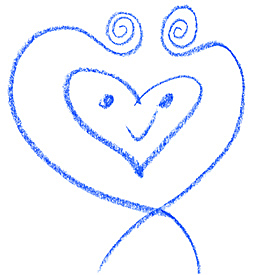One of the ways we can understand how trauma is manifesting in our world today is to look at ways we separate from one another. Consider the many conversations that are polarized, on topics such as: politics, COVID-19, religion. We here in the U.S. +hold many different perspectives and beliefs about our current situations. Even when we can agree on the current situation, we often polarize on ways to create change. In addition, we tend to believe that we have the right perspective, which leads us to lose curiosity and believe that others are wrong. Among us, we seem to hold quite different ideas of what is in integrity, what is true, and what is just.
My understanding is that aligning with truth, with justice and with care is an ongoing whole-bodied experience. We can begin by noticing our experience of body sensations, the state of our nervous system, our emotions and heart openness or closure, our thinking, connection with essence, the divine, and what we hold most dear. We can witness: Is our awareness holistic and inclusive of these various aspects of ourselves? The polarizations in the world tend to exist inside us as well in some form, in the ways we include or exclude aspects of ourselves as well as levels of development. An additional level of complexity is presence with our whole selves even as we relate with others, and with the systems of our culture.
With all the complexity of relating inside and with others, it’s easy to blame someone else or even ourselves for how we participate or don’t participate in life. Blame may offer a temporary reprieve from the discomfort of whatever is not working, however since blame does not address the source of an issue, blaming tends to keep issues recycling. Through witnessing ourselves and the world around us, new possibilities and choices gradually emerge. Witnessing is a whole-body activity of seeing, feeling, and sensing what is happening, growing our capacity to discover an aligned response which is essentially creative. From our wholeness and grounded presence, we can turn toward whatever is not working inside or around us, and respond, choose, create, and invite collaboration.
Collective trauma makes itself known to us as symptoms of disconnection, polarization, harm, lack of balance, stuckness, and injustice in our societal systems and social norms. For example, when a child asks a question about why something that doesn’t make sense is the way it is, and we answer, “that’s just how it’s always been,” we are likely touching on a collective trauma symptom.
To heal, restore wholeness, and create systems that are grounded in integrity and also responsive will likely take many individuals practicing on their own and together to create a body of coherence that can begin to witness our collective issues. We will need to learn to see to the root of things with wisdom and not blame, so we can create accountability, healing, and systemic change and restoration for people who have been systemically oppressed or systemically oppressive.
And so we practice…
~~
Introduction to Listening & Subtle Competencies for Healing
|

